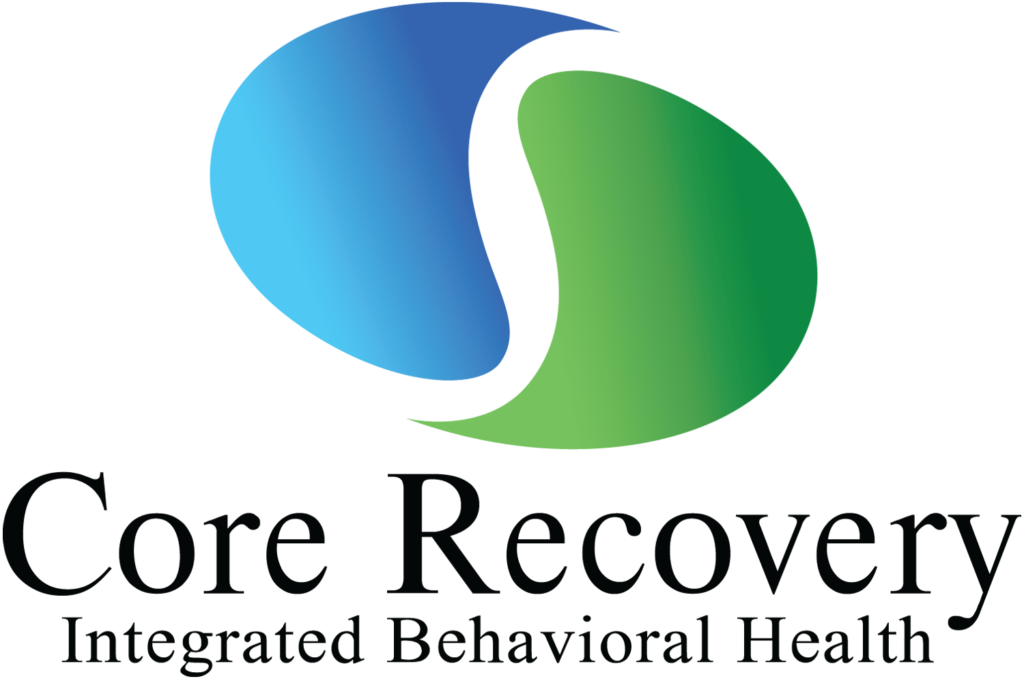Are you living in the shadows of past traumatic events, looking for a glimmer of hope? Trauma, in its many forms, can create deep emotional and psychological scars, significantly impacting every aspect of your life. But here’s the good news – you’re not alone, and there are solutions. A wide range of trauma therapy techniques have been developed to help individuals just like you heal from the wounds of the past and reclaim their lives. At Core Recovery, we recognize that each person’s experience with trauma is unique, thus requiring a personalized therapeutic approach.
Understanding trauma and its aftermath is the first step towards healing. Experienced as a disastrously distressing event or a prolonged exposure to adverse circumstances, trauma can distort one’s perception of self and reality, often leading to intense fear, avoidance, and anxiety. But in the hands of skilled therapists using the right trauma therapy techniques, the debilitating clutches of trauma can be loosened.
Here’s a quick overview of the most commonly utilized trauma therapy techniques:
- Cognitive Behavioral Therapy (CBT): Involves identifying and shifting negative thought patterns.
- Prolonged Exposure Therapy (PE): Aims to reduce avoidance behaviours by slowly and systematically confronting trauma-related thoughts, emotions and scenarios.
- Eye Movement Desensitization and Reprocessing (EMDR): Uses bilateral stimulation to process trauma on an emotional level.
- Trauma-focused Cognitive Behavioral Therapy (TF-CBT): Tailored especially for children and adolescents dealing with trauma.
- Group Therapy: Provides a platform for shared healing experiences.
Through this article, we aim to provide a comprehensive exploration of various trauma therapy techniques, helping you make informed choices on your healing journey. Know that, with the right therapy, resilience is attainable, and the specters of trauma can recede into the past where they belong.
Understanding the Different Types of Trauma
Trauma is a complex issue that can manifest in various forms. To better understand how to address it, let’s delve into the three main types of trauma: acute, chronic, and complex.
Acute Trauma
Acute trauma results from a single, often shocking event. This could be a car accident, a natural disaster, or an instance of physical or sexual assault. The suddenness and intensity of the event can leave deep emotional scars, often causing the individual to relive the event through flashbacks or nightmares. Acute trauma can severely impact a person’s sense of safety and trust in the world.
Chronic Trauma
Chronic trauma is the result of prolonged or repeated traumatic experiences. Examples include long-term domestic violence, persistent bullying, addiction, or enduring illness. Unlike acute trauma, which stems from a one-off event, chronic trauma arises from ongoing, relentless exposure to distressing situations. The constant stress can wear down an individual’s resilience and coping mechanisms, leading to various mental health issues over time.
Complex Trauma
Complex trauma occurs when a person experiences multiple different traumatic events, often within harmful interpersonal relationships. Examples include childhood abuse, ongoing domestic violence, or living in an environment of civil unrest. Complex trauma can profoundly shape a person’s worldview, self-perception, and ability to form healthy relationships. Because of its multifaceted nature, complex trauma can be particularly challenging to cope with and heal from.
Understanding these different types of trauma is crucial in identifying the most appropriate trauma therapy techniques for each individual’s unique needs. At Core Recovery, we believe in tailored therapy plans that consider the type and intensity of trauma experienced. Recognizing the nature of the trauma is the vital first step in embarking on the path to healing and recovery.
The Role of Trauma Therapy in Healing and Recovery
Once we’ve identified the nature of the trauma, we utilize specific trauma therapy techniques to help our clients heal and recover. The primary goal of trauma therapy is to facilitate recovery by integrating traumatic memories, changing thoughts and responses to emotions, and soothing the nervous system.
Integrating Traumatic Memories
Traumatic experiences can disrupt the usual memory processing pathways, leading to distressing symptoms like flashbacks and nightmares. A key component of trauma therapy is helping individuals access and integrate these memories in a healthier, less distressing way.
Using methods like Eye Movement Desensitization and Reprocessing (EMDR), we guide our clients in revisiting traumatic experiences. The aim is not to relive the trauma, but to view it from a different perspective, reducing its emotional charge and helping the brain to reprocess the memory.
Changing Thoughts and Responses to Emotions
Trauma significantly impacts how we think and respond to our emotions. Trauma-focused Cognitive Behavioral Therapy (TF-CBT) is a technique we frequently employ to assist individuals in identifying and challenging negative thought patterns and beliefs that could be stemming from their traumatic experiences.
Through TF-CBT, clients learn to reframe their thoughts, which in turn can lead to better emotional regulation. This cognitive restructuring can promote healthier responses to stressful situations and decrease trauma-related symptoms.
Soothing the Nervous System
Trauma can cause the body’s nervous system to be in a constant state of high alert, leading to physical symptoms like chronic pain or heart issues. It’s essential to address this physical component of trauma, as the body and mind are intricately connected.
Somatic therapies, like Sensorimotor Psychotherapy (SP) and Somatic Experiencing (SE), are used to help clients recognize and release the physical manifestations of their trauma. These techniques focus on how the body is reacting to stress and teach methods to discharge it, resulting in a calmer, more balanced nervous system.
At Core Recovery, we understand the complexities of trauma and the impact it can have on both the mind and body. Our team of experts is dedicated to providing comprehensive, personalized treatment plans that encompass a range of effective trauma therapy techniques. Our goal is to offer a supportive and therapeutic environment where our clients can process their trauma safely and start on their journey to recovery.
Overview of Different Trauma Therapy Techniques
In order to address the various aspects of trauma effectively, we at Core Recovery use a range of trauma therapy techniques. These methods, backed by evidence and research, aim to help our clients process their traumatic experiences, develop healthier responses to triggers, and ultimately, foster resilience and recovery.
Cognitive Behavioral Therapy (CBT)
CBT is a widely-used trauma therapy technique that hinges on the understanding that our thoughts and behaviors are interlinked. The goal is to modify harmful thought patterns, which in turn can bring about behavioral improvements. Trauma survivors often develop detrimental beliefs about themselves and the world, and CBT helps them to identify, assess, and change these perceptions.
Eye Movement Desensitization and Reprocessing (EMDR)
EMDR therapy is a unique approach that facilitates the reprocessing of traumatic memories. This involves having the client recall the traumatic event in a safe environment, while the therapist employs bilateral stimulation of the brain. The aim is to reduce the emotional charge of the memory, helping the client to integrate it in a healthier and more adaptive way.
Prolonged Exposure Therapy (PE)
PE therapy focuses on addressing avoidance behaviors common in trauma survivors. By exposing clients to distressing reminders of their trauma in a controlled manner, they can gradually learn that these memories are not dangerous and need not be avoided. This approach utilizes relaxation and grounding techniques to help manage the stress associated with exposure.
Trauma-Focused Cognitive Behavioral Therapy (TF-CBT)
TF-CBT is a form of CBT specifically designed for addressing trauma. This approach focuses on providing psychoeducation about trauma and stabilizing symptoms through relaxation and coping skills. The goal is to help clients integrate their trauma story into their history rather than their present.
Comprehensive Resource Model (CRM)
CRM therapy involves helping clients to connect with a ‘sacred place’ through guided imagery and breathwork. This connection facilitates the processing and release of trauma, with the client being supported by their chosen spiritual being, spirit animal, or force of nature throughout the process.
Internal Family Systems (IFS)
IFS therapy postulates that individuals have a ‘Self’ and ‘Parts’ that protect them from the pain of trauma. The goal of IFS is to assist a person in connecting with their Self, understanding their protective Parts, and releasing the pain of the Exiles, resulting in reduced PTSD symptoms.
Cognitive Processing Therapy (CPT)
CPT is a structured approach that delves into how trauma affects the mind and body. The therapist uses cognitive restructuring to help the individual identify, assess, challenge, and change rigid, maladaptive thoughts related to the trauma.
Brief Eclectic Therapy (BET)
BET combines aspects of CBT and psychodynamic therapy to best meet the needs of a client. The therapy involves understanding trauma, employing relaxation exercises, and discussing how the trauma has affected the client and what they have learned from it.
Narrative Exposure Therapy (NET)
NET encourages individuals to share their trauma story in a supportive, non-judgmental space. By externalizing their experiences through storytelling, survivors can gain a sense of agency over their own stories, empowering them to view themselves as resilient protagonists rather than helpless victims.
Each of these trauma therapy techniques offers a different approach to handling trauma, and we at Core Recovery strive to use the most effective methods based on the individual needs of our clients.
The Role of Coping Skills in Trauma Therapy
Just as important as the therapy itself, coping skills provide the necessary tools for trauma survivors to manage their distressing symptoms in the real world. These practical techniques can be used both in and out of session, allowing you to continue your healing journey outside the therapy room.
Body Scan Exercises
The first coping skill in our toolkit is the body scan exercise, which aims to raise awareness about your physical sensations in the present moment. Trauma can often leave a lasting impact on your body, manifesting as tension or discomfort. By slowly scanning each section of your body, you’re able to notice these sensations without the need to change anything. This simple act of mindful observation can often bring relief, helping your body to relax from its state of constant stress (Shapiro, 2001).
Safety Switches
Safety switches are physical techniques that use your body’s senses to help cope with difficult feelings. It could be a specific posture, a stance, or even an eye gaze that brings you back to a place of strength and groundedness. A technique like turning your lips into a “Half Smile” can trigger a neurological shift in your brain, releasing feel-good-hormones and subtly shifting your mood (Linehan, 2015).
Coping Ahead
The ‘Coping Ahead’ technique is particularly useful when you’re anticipating a stressful situation or event. By slowly visualizing the scenario and the difficulties you may encounter, you can prepare yourself with the necessary skills and action plans. This proactive approach to managing your responses can significantly reduce anxiety and enhance your ability to cope.
Containment
Containment is about setting boundaries for your trauma work, ensuring you’re not overwhelmed by traumatic memories in your everyday life. This involves creating a mental ‘safe place’ where you can store distressing memories until your next therapy session.
Grounding Techniques
Grounding techniques help you to reconnect with the here and now, especially when you’re experiencing flashbacks or dissociation. This could be as simple as focusing on your breath, feeling the ground beneath your feet, or engaging with your senses to bring yourself back to the present moment.
Distancing Techniques
Distancing techniques help you to create a mental space between yourself and your traumatic memories, reducing their emotional impact. One method is to visualize the memory as an image on a movie screen, helping you to observe the event without being fully immersed in it.
Body Movement
Regular body movement, such as walking or yoga, can also be beneficial. Physical activity has been shown to reduce symptoms of trauma by releasing pent-up energy and promoting a sense of well-being.
At Core Recovery, we believe in the power of these coping skills as an integral part of our trauma therapy techniques. They offer practical support for our clients, empowering them to manage their trauma symptoms and continue their healing journey beyond our therapy sessions.
The Benefits of Trauma Therapy
Through trauma therapy, we aim to guide individuals on their healing journey by offering a space to process their experiences and learn critical coping skills. The benefits of trauma therapy are numerous, ranging from reducing fear to validating experiences.
Reducing Fear and Avoidance
One significant benefit of trauma therapy is its ability to reduce fear and avoidance. Trauma often instills a deep-seated fear in individuals, leading them to avoid people or situations that remind them of their traumatic experiences. This avoidance can make it challenging to function in daily life.
In our therapy sessions, we help clients confront these trauma memories and work towards overcoming their fears. By facing these fears in a safe space, individuals can regain control of their lives and reduce anxiety associated with specific triggers. This is a key aspect of our trauma therapy techniques at Core Recovery.
Improving Coping Skills
Trauma therapy also focuses on improving coping skills. Living with trauma-related issues can often lead individuals to develop problematic beliefs such as feeling incapable of dealing with their trauma. Therapy equips individuals with the confidence and coping skills needed to manage day-to-day life effectively.
Building Trust
Trust is often disrupted by traumatic experiences, making it difficult for individuals to trust others. Through therapy, we help our clients re-evaluate their beliefs about trust and help them understand that it’s okay to give people a chance. Rebuilding trust is a gradual process, but it’s a crucial step towards healing.
Challenging Problematic Beliefs
An essential part of trauma therapy involves challenging problematic beliefs. Individuals may develop harmful thought patterns about themselves, making it difficult to comprehend why the traumatic event occurred. Our therapy sessions aim to help clients challenge these beliefs, offering a new perspective and reducing the intensity of trauma-related emotions such as shame and guilt.
Offering Validation
Finally, validation is a critical aspect of trauma therapy. Often, individuals who have experienced trauma may have been told that their experiences or reactions are unreasonable. This lack of understanding can cause further emotional distress. In therapy, we validate our clients’ experiences, offering understanding and acceptance, which are crucial for the healing process.
In conclusion, trauma therapy provides numerous benefits that can significantly improve an individual’s quality of life. At Core Recovery, we are committed to providing an empathetic and supportive environment where individuals can navigate their journey towards healing. Through our trauma therapy techniques, we strive to empower individuals to lead healthier, more fulfilling lives.
Conclusion: The Importance of Seeking Trauma-Informed Therapy
Dealing with trauma can often feel overwhelming and isolating. However, remember that you’re not alone in this journey. Trauma therapy techniques have been scientifically developed and refined over the years to enable healing and recovery. As a team of professionals at Core Recovery, we understand the profound impact trauma can have on an individual’s life.
We believe in the transformative power of trauma-informed therapy. It’s not just about addressing the symptoms but getting to the root of the problem and helping you understand and process your experience. This approach can help reduce fear and avoidance, improve coping skills, build trust, challenge problematic beliefs, and offer validation.
Furthermore, trauma-informed therapy can provide you with practical tools and strategies to help manage symptoms, maintain emotional balance, and ultimately improve your quality of life. Techniques such as grounding exercises, body scan exercises, and coping ahead can be beneficial in managing distressing symptoms and promoting overall well-being.
At Core Recovery, we offer a range of trauma therapy techniques, including Cognitive Behavioral Therapy (CBT), Eye Movement Desensitization and Reprocessing (EMDR), and Trauma-Focused Cognitive Behavioral Therapy (TF-CBT). Our therapists are trained and experienced in these techniques, and they’re committed to creating a safe, supportive, and compassionate environment for healing.
Finally, it’s important to remember that everyone’s journey to recovery is unique. What works for one person may not work for another. Therefore, we personalize our treatment plans to meet the specific needs and goals of each individual.
In conclusion, seeking trauma-informed therapy is a crucial step towards healing and recovery. It’s about reclaiming your life from the clutches of past wounds and moving forward with renewed strength and hope. At Core Recovery, we’re here to support you every step of the way.
To learn more about our services and how we can help you navigate your trauma recovery journey, please visit our services page and about us page. You can also request an appointment directly on our website.
Healing from trauma takes time, but with patience, self-awareness, and appropriate support, it’s entirely possible. It’s never too late to seek help and start your journey towards recovery.







 In CA By O360®
In CA By O360®